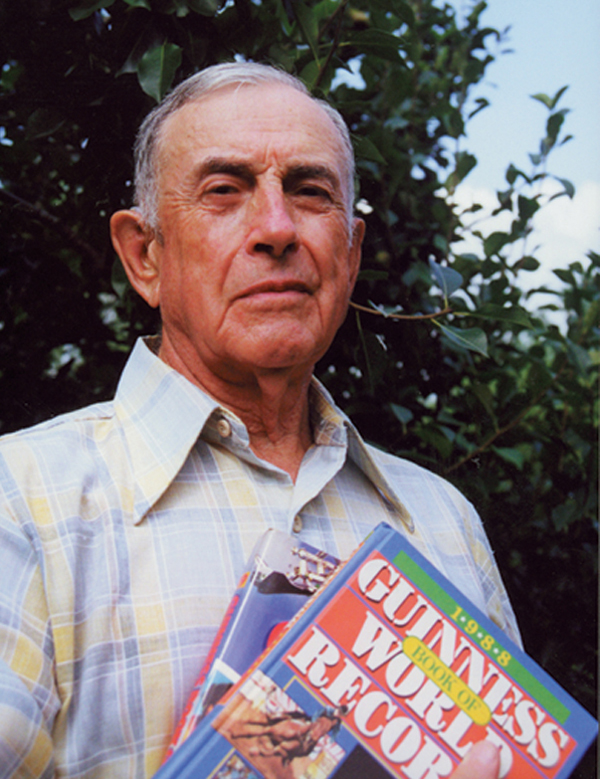
Chapter 35
Charles Wilber, Growing Organically
Stewardship means conservation and careful nurturing. That's what I do with my tomato plants. I nurture them – and nature always rewards those who nurture her carefully."
Charles H. Wilber
Crane Hill, Alabama
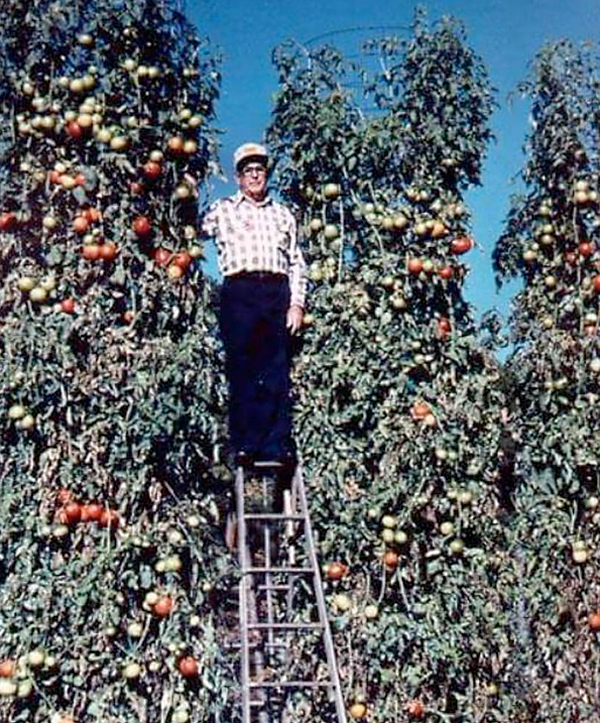
Any discussion about growing tomatoes for yield organically would not be complete without mention of Charles H. Wilber, an Alabama gardener. Wilber was a Guinness Champion having grown a record 27 foot tall cherry tomato plant and having harvested a record 1368 pounds of tomatoes from just four tomato plants, 342 pounds of tomatoes per plant. He also grew 100 pounds of tomatoes from a single tomato plant grown in a container. And he did all of this and more with nothing out of the ordinary, and without the use of synthetic chemical fertilizers. His method included his own special compost, a unique way of mulching and pruning along with consistent watering.
By Wilber's calculations, based on the productivity of his plants, he determined that farmers today are using ten times too much land at probably ten times too much expense to produce food of marginal quality. "Farmers in the past, and even today in most third world countries, use natural fertilizers. Only in recent years, has man, attempted to improve on Mother Nature by using chemical fertilizers and consequently more and more insecticides and poisons because the balance of nature has been upset. When will we ever learn to work in harmony with nature?"
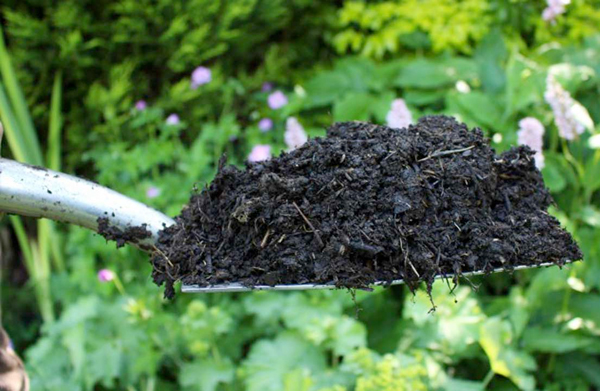
Compost: Wilber referred to compost as the black gold of the organic garden and compost was a very important part of the way he grew his tomatoes. Wilber made his compost using a system he perfected and that worked well for him. He built two compost bins side by side. They were four feet high and four to six feet in diameter and made of 1 x 2 inch wire. They were placed in a well-drained area free of trees. Wilber filled these with a mixture of kudzu, cow manure, soil, clay, granite dust and wood ashes. Although kudzu is an invasive weed now native to the South, those of us in the North and elsewhere who do not have access to it, can substitute green or dry matter in the form of hay or alfalfa, weeds, grass clippings or kitchen waste. Wilber recommends that for more information on composting you should purchase a good book. I recommend for starters that you read the chapter in this book on composting. 
Wilbur used the following method to make his compost. Start the compost pile with a 3 inch deep layer of dry, coarsely ground "hay" of kudzu. (You could use wheat straw mixed with some alfalfa.) Then put 2 inches of cow manure on top. Next comes 1/4 inch of garden soil, a sprinkling of colloidal clay and either granite dust or hardwood ashes. Repeat the layers until the bin is full. Then moisten the pile by hand with a garden hose. Water until the heap is damp but not wet enough to release water when squeezed. Cover the pile with a tarp to prevent rain from washing away the nutrients and water the pile by hand as needed to keep it moist. "Never let it rain on uncovered compost." Keep in mind that he fills only one of the bins while the other awaits the transfer of the materials to it when the time is right.

Every 3 days (or as often as the interior of the pile has maintained a 160 degrees internal temperature for a day or two), using a pitchfork, he transfer the pile from one bin to the other, taking care to move the outside layers of the old pile to the interior of the new pile. The pile is kept under a protective cover to prevent rain from washing out the nutrients. After two weeks (about five heap turnings), turn the pile once a week until no further internal heating occurs. Then you may store the compost in barrels, garbage cans, etc. for up to three years, adding water as needed to keep the compost moist. The containers are not tightly sealed, just covered.
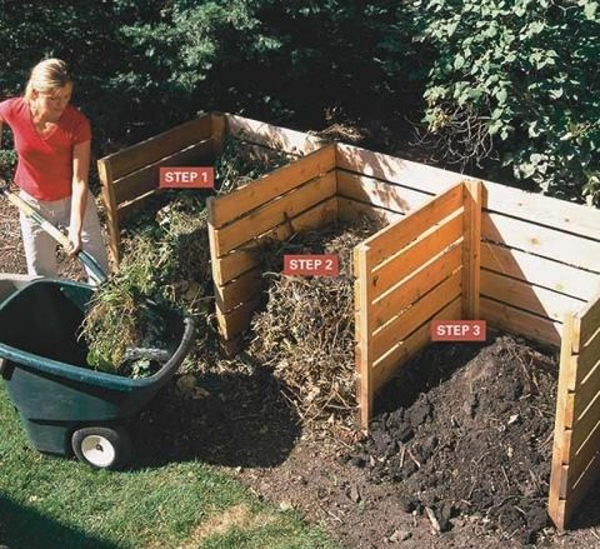
Garden Preparation: Fall garden preparation consists of planting annual rye where tomatoes are to be planted in the spring. The rye grows all winter long. At least 30 days before planting crops, mow the garden with a hand mower and till everything in. The rye will compost right in the garden. After tilling in the rye, the planting area is covered with black plastic to protect it from rain. Covering prevents the ground from being too wet at planting time.
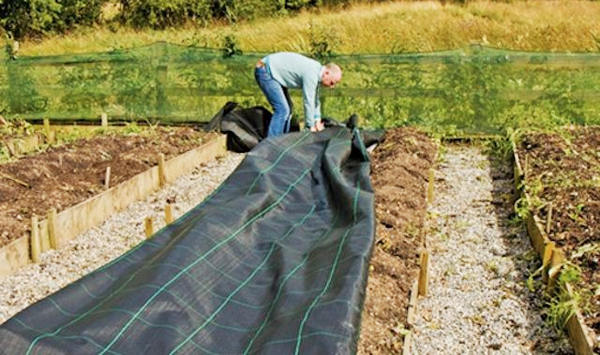
Planting Preparation: Wilber suggests planting tomatoes 5 feet apart to give them room to grow. The planting holes are dug 24 inches wide and 6 inches deep, reserving the top 6 inches of soil in a 5 gallon bucket to be used to refill the hole later. Then dig the hole 6 inches deeper and scatter that soil around the garden. Then mix 1 part compost to 3 parts reserved soil (skim soil from the surface elsewhere in the garden to supplement the reserved soil as needed) and refill the hole, firming as you fill, leaving a depression in the center where the plant will go.
Planting: Pinch off all leaf stems from the transplants except the top pair. Leave the buds on to produce suckers, new secondary vines, which will make up some of the 18 vines that will be tied to the cage as described later. The plant is placed at its original depth in the soil, just barely covering the root ball. (Wilber does not plant deep as do many growers.) A 1/2" layer of compost is then spread over what would be the mature root zone of the plants, approximately 4 feet in all directions around each tomato plant, and a foot away from the plant. The same area is then covered lightly with alfalfa meal. Till everything in and smooth off the area. Wilber fertilizes his young plants using compost tea. He makes this by hanging a bag of cow manure in a 55 gallon drum of water as is described later.

Mulching: Mulch is made from baled wheat straw that has weathered for a few months. The use of wheat straw reduces the problem of introducing weed seed into the garden. Break a straw bale into square mats several inches thick. Consider the plant to be the center square of a 3x3 grid. Put straw mats in the 8 outer squares of the grid, leaving the center square open. Press the edges of the squares together firmly to make a weed-proof barrier. Then fill the center square with finely chopped leaves or loose straw about an inch deep. This mulch cover allows the roots to expand rapidly and safely under a protective layer of dense mulch in a moist, fertile environment. The mulch also preserves a great deal of moisture, suppresses weeds and makes weeding and cultivating unnecessary. It also evens out soil temperatures keeping the soil cool in the heat of day and warm at night, and finally, it enriches the soil with its organic mass when it decays. At the end of the growing season the straw will be tilled into the soil and allowed to compost.
Watering: Wilber used a watering system made of 10 foot sections of 3/4 inch PVC pipe with holes 3/32 holes drilled in one foot apart. The water is allowed to warm up in the pipes. He kept the soil under the mulch moist, but not soggy. What he used was actually a drip watering system. (These systems and variations are now available on the Internet.) How much water is required will depend a lot on your soil type with clay soil requiring the least amount of water and sandy needing the most.
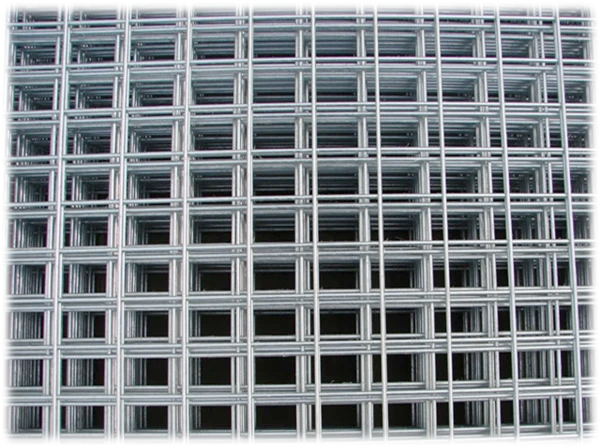
Plant Support: Wilber advises that when the tomato plants are tall enough to need support, that cages made of concrete reinforcement wire be used. These cages are made from 6 inch concrete reinforcement wire which is readily available at home improvement stores. Make a cage using a piece 5 feet tall by 9 feet in length. Form it into a cylinder 5 feet high and 3 feet wide, joining the ends with hog rings. You should end up with 19 vertical wires. Rebar is used to fasten each tomato cage to the ground, using three pieces of rebar, three feet long, per cage. To support the plant while it is small, 3 bamboo sticks can be inserted through the cage such that they form a triangle enclosing the stem of the plant. These are then tied to the cage. When tying a plant, use soft three ply string tied loosely below the axil, where a new leaf and sucker would be forming. Twine will also work. Tie the stem to one of the 18 vertical wires of the cage. (More about this in the section on pruning.) If you decide to stack cages you will need three guide wires per cage and possibly some extra rebar. What you don't want is a cage toppling over.

Fertilizing: The only fertilizer ever used by Wilber was compost or manure tea. Wilber put a quarter to a full bushel of either aged manure or aged compost in a burlap sack. This was hung over the edge of a 55 gallon barrel which was then filled with water. The water was directed to run over and through the burlap bag. The bag was allowed to soak for three or four days with agitating several times a day. Then a bucket was dipped into the barrel and fresh "tea" was used to fertilize each plant by pouring the mixture into the plant's root zone.
Pruning: Wilber's pruning technique is unusual. Below the main fork of the plant, allow 6 suckers to grow, and each of them to branch once, yielding in total 12 growing tips. Then allow the tips of the two main vines to develop 3 tips each, for a total of 18 growing tips per plant. Tie each of the 18 tips loosely to the outside of each vertical wire of the cage. As they grow, keep them trained to their vertical wires, essentially 18 vines tied to 18 wires. As other suckers grow, if they come from a strong section of the vine, allow them to grow until they produce a flower cluster. Then pinch off the tip to dead end the sucker. Otherwise, pinch off the whole sucker. If the sucker is already more than 1 1/2 inches long, pinch off the tip of the sucker instead of removing the entire sucker. Pruning must be performed at least once a week and preferably more often. If the suckers have grown too large, simply dead head the sucker by removing its tip rather than removing the entire sucker.

As the vines grow up, Wilber recommends that you stack a second cage on top of the first, attaching it with hog rings. If you stack cages, you should use guy wires for extra stability. If you choose to limit the height of your plants you may either top the plant once it reaches the desired height, or you can allow it to grow over the side of the cage and back down to the ground.
What is a sucker? "In the crotch formed between the leaf and the stem, also called the axil, small shoots will appear. These are called suckers and if allowed to grow they will become stems themselves which will in turn send off suckers forking again and again. If these suckers are pinched off, the stem can be trained to grow straight up the cage. If allowed to grow, the plant can be forced to branch. This is the fundamental process we are controlling in pruning. In the end, every branch, no matter how big, began life as a sucker."
Disease Control: Wilber recommends that you never touch wet leaves to avoid spreading disease. Any diseased foliage should be removed from the garden and not composted. Wilber used a torch to sanitize his cages each year. He also used Maneb (Manzeb), an antifungal agent, but only when absolutely necessary. At the end of the growing season all plant residue is removed from the garden and burned. Wilber was a stickler about not allowing smoking or tobacco chewing in his garden to prevent infection with tobacco virus. The primary disease control system used by Wilber was prevention rather than treatment.
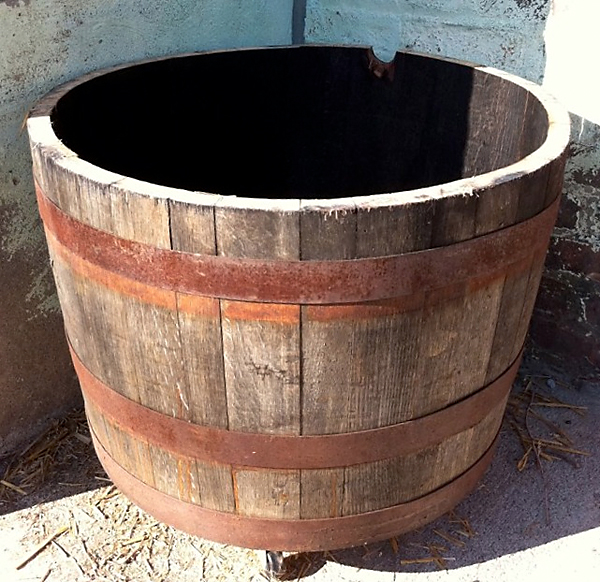
Container Growing: Wilber grew some tomatoes in containers. He used half whiskey barrels or similar-sized containers. He drilled holes in the bottom to allow for drainage. He filled the containers with 1 part compost to 3 parts topsoil, placed fine mulch on top, and used the same caging system and watering system as he used for growing in the ground. Container plants did require more frequent watering
Garden Location: Wilber recommends growing tomatoes in a spot where the plants will receive at least eight hours of full sun. He also prefers a southeastern slope for good drainage. Avoid areas of standing water or areas where there are nearby trees as the tree roots will take water and nutrients away from the tomato plants. Also Wilber recommends strict crop rotation. He never plant tomatoes in the same area he planted in the year before. This could be a problem for growers with limited space.
More Advice: Wilber has many other suggestions a few of which are as follows. When you choose the seeds you are going to grow, select only the round fat ones. They have more nutrients. Junk seeds are flat like wafers and usually sold in packets while the good seeds are plump and sold as commercial grade. Be wary of tap water. It is better if you can use rain water, pond water or lake water or water from a nearby stream for your garden.

For more details and advice and picture illustrations, it is suggested that the reader refer to Charles H. Wilber's book, "How to grow World Record Tomatoes." It is an interesting book which is easy reading and full of ideas. The pictures are especially helpful in demonstrating his techniques. I cannot recommend it enough. I have read it several times.